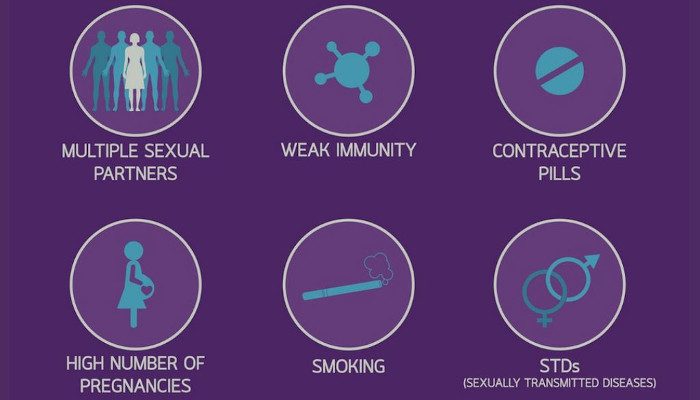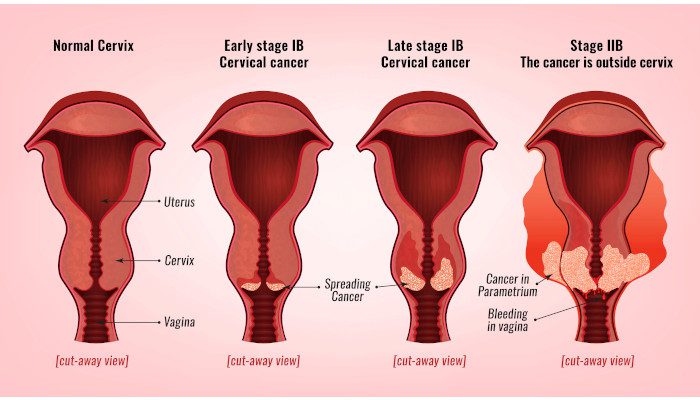Cancer is a serious and life-threatening illness that affects millions of people worldwide. Unfortunately, there are many health rumours about cancer that circulate in society and can cause confusion and misinformation. As a result, it is critical to be aware of the cancer-related health rumours that are circulating in society in order to seek evidence-based information about your health. By doing so, you can make informed decisions and protect yourself from misinformation. Oncoplus Hospital is considered to be one of the best hospitals in Delhi for cancer. This blog will teach you about some of the most common cancer myths as well as actual cancer facts.
Common cancer myths and the truth about cancer:
- Myth: Cancer is contagious and can be spread from one person to another.
Fact: This statement is completely false. Cancer is not a contagious disease, and it is not a viral disease that spreads through sitting, eating, or sleeping together with the cancer patient. It is caused by genetic mutations or environmental factors, such as exposure to toxins at home or at work, that increase the risk of developing cancer.
- Myth: Cancer is always a death sentence.
Fact: It is true that cancer is a very serious illness, but it is not always a death sentence. Many people who are suffering from cancer can live long and healthy lives with proper treatment and care. How long a cancer patient lives or dies from the disease is entirely dependent on factors such as whether the cancer is slow or fast growing, how much cancer spreads in the patient’s body, and the patient’s overall health, among others. In fact, the advancement in medical technology and treatments has improved the survival rates of cancer patients.
- Myth: Cancer is caused by stress or emotional trauma.
Fact: While stress can have a negative impact on the overall health of a cancer patient, there is no scientific evidence to support the claim that stress causes cancer. In reality, the causes of cancer are complex and multi-factorial, including both genetic and environmental factors.
Read More Blog:- Myths And Facts About Brain Tumors
- Myth: Radiations from cell phones cause cancer.
Fact: Cell phones release low-frequency radio waves. These rays are non-ionizing types of energy and do not cause any damage to the genes of the patients.
- Myth: Consuming sugar will lead to cancer.
Fact: There is no evidence to support the claim that consuming sugar leads to cancer. The accumulation of excess sugar in the body can lead to other health problems like weight gain, diabetes, heart disease, etc. But it is not the sugar itself that causes cancer. A moderate amount of sugar can be included in a balanced diet. Eating a balanced diet and having a healthy lifestyle reduce the risk of cancer and other health problems.
- Myth: Abiopsy leads to the spread of cancer disease in the patient’s body.
A biopsy is a medical procedure in which a sample of tissue is taken from the patient’s body to diagnose abnormal tissue growth, such as cancer. But scientific evidence does not support this myth. In fact, a biopsy is essential for diagnosing cancer and is considered safe by the medical community. During a biopsy, a small portion of tissue is removed from the body, and the surrounding tissue remainsuntouched. This minimises the risk of spreading cancer cells if they are present. Biopsy results can help healthcare providers determine the best course of treatment for a cancer patient. Without biopsy results, it is impossible to diagnose the cancerous cells in the patient’s body, and doctors cannot be able to provide appropriate treatment to the patient.
- Myth: Deodorants or chemicals cause cancer.
Fact: There is no scientific evidence found to support this claim. It is important to note that cancer develops in the human body for a variety of reasons, including genetics and lifestyle factors such as smoking, sun exposure, poor diet, etc. The use of deodorants is not the cause of cancer, and the chemicals used in deodorants are completely safe to use.
In conclusion, it is important to be cautious of the information we read and share about cancer. Before you believe any of the myths about cancer, always consult your healthcare professional to learn the actual facts about this complex and serious illness. If you or a loved one has cervical cancer, you can go to Oncoplus Hospitals, which offer the best cervical cancer treatment to their patients.
Cervical cancer is a type of cancer that starts in the cells of the cervix, which is the lower part of the uterus that connects to the vagina. It is caused by the human papillomavirus (HPV) and can be prevented with screening tests and HPV vaccines. Early detection and treatment can protect women from having cervical cancer. But if a woman is diagnosed with cervical cancer, then it can be a life-altering experience for her or develop a feeling of stress in her. It is normal to feel this way, but it is crucial to find ways to manage stress as it can have a significant impact on both physical and emotional well-being. You don’t have to get disappointed in this situation, as there are various treatment options available to treat cancer. And Oncoplus Hospital offers the best cancer treatment in Delhi for all cancer types. In this blog, you will learn ways to manage stress after a cervical cancer diagnosis.
5 ways to manage stress after a cervical cancer diagnosis
Cervical cancer can be a traumatic experience, both physically and emotionally. However, it is essential to find ways to manage stress to reduce its impact on your health and wellbeing. Here are five ways to help manage stress after a cervical cancer diagnosis.
- Discover Cervical Cancer Treatment Options:
There are various factors on which the treatment for cervical cancer depends, like your overall health status, the stage of the cancer, and your desire to maintain fertility. Generally, people are unaware of the treatment options and how these therapies affect their finances. So, if you are diagnosed with cervical cancer, first you should get a second opinion and talk to your doctor about the questions that are rising in your mind related to cancer, like treatment costs and side effects, etc.
Read More Blog: How Does Raising Awareness About Cervical Cancer Aid In Its Prevention?
- Seek support from loved ones:
Whether it is a family member, friend, or therapist, talking to someone about your feelings and concerns can be incredibly therapeutic. It can provide a sense of relief and support. This will also help boost your morale, as emotional support is very important. Because when you share your thoughts and feelings with someone whom you love, this helps to reduce your stress level. It’s important to have a support system during this difficult time. Joining a support group specifically for people with cervical cancer can also provide a sense of community and make you feel less alone.
- Exercise Regularly:
Physical activity is a great way to reduce stress and improve overall health. Regular exercise can help reduce anxiety and depression, boost your energy levels, and improve your sleep. Even a simple walk can help clear your mind and give you relief from stress. Exercise releases endorphins, the “feel-good” hormone, which helps to improve your mood and overall well-being.
Read More Blog: Physical Activity And Cancer Risk
- Practice Meditation:
Mindfulness helps you be present in the moment and focus on your thoughts and feelings without making any kind of judgment. The mindfulness technique is very effective in reducing stress levels and anxiety. This can be practiced through meditation, deep breathing, and yoga.
- Take Good Care of Yourself:
It is very important that you take care of your physical and emotional well-being during this time. You should eat a healthy and nutritious diet that is rich in fruits, vegetables, and whole grains, as this will help boost your energy levels, reduce stress, and improve your mood. It is essential to get enough sleep, as a lack of sleep increases stress levels and leads to exhaustion. You should get at least seven hours of sleep per night to manage stress and improve your overall health. Not only this, you should go for regular health checkups to diagnose the changes in your health.
In conclusion, a cervical cancer diagnosis can be a stressful experience, but there are many ways to manage stress and improve your well-being. Everyone responds differently to stress, and it may take time to find what works best for you. By talking to someone, exercising, practicing mindfulness and meditation, getting enough sleep, and eating a healthy diet, you can reduce the impact of stress on your life and improve your overall health and wellbeing. These stress management techniques will help you improve your overall health during this difficult time.
Cervical cancer is the cause of death among all women. Cervical cancer begins in the cervix’s cells, and the cervix is the narrow end of the uterus. The cervix connects the uterus to the vagina. Cervical cancer grows gradually over time. In this type of cancer, the cervix cells undergo changes, which are termed “dysplasia,” in which abnormal cells start to develop in the cervical tissue. If these abnormal cells are not removed, they will spread rapidly in the cervix and surrounding areas over time. January is cancer awareness month, which is why Oncoplus Hospital raises awareness about cervical cancer, and the best cervical cancer treatment is also available here. In this blog, you will learn about cervical cancer.
Types of Cervical Cancer:
Cervical cancers are of two types: squamous cell carcinoma and adenocarcinoma. Generally, up to 90% of cervical cancers are squamous cell carcinomas that develop from cells in the ectocervix. Cervical adenocarcinomas, on the other hand, are a rare type of cancer that grows in the endocervical glandular cells and is also known as clear cell carcinoma or mesonephroma.
Symptoms of Cervical Cancer:
Usually, cervical cancer is difficult to detect because it doesn’t have symptoms. This is because many women don’t even realize they are suffering from cervical cancer.
In the early stages of cervical cancer, the symptoms that women suffer are as follows:
- When the women have vaginal bleeding after sex or menopause.
- If the regular periods are longer or heavier than normal.
- Women suffer from vaginal bleeding between periods.
- The odor of vaginal discharge is stronger or contains blood.
- If the woman feels so much pain during sex.
In the advanced stage of cervical cancer, the symptoms that women suffer are as follows:
- If there is a pain in the bowel and bleeding from the rectum,
- When a woman experiences pain while passing urine or when there is blood in the urine.
- If a woman experiences abdominal pain or fatigue, consult the doctor.
- Or if there is swelling in the legs.
Factors That Increase Your Risk of Cervical Cancer:
- If a person has a weak immune system, then their body cannot fight HPV infections.
- If the person smokes or breathes in secondhand smoke, this will also increase the risk of cervical cancer.
- If the person becomes sexually active before 18 years of age or if they have multiple sexual partners, then they have a high risk of HPV infections.
- Cervical cancer also occurs in those who use oral contraceptive pills or give birth to many children.
Methods for Preventing Cervical Cancer
According to your age, health, and lifestyle, cervical cancer occurs in women. But some precautions can be taken to prevent cervical cancer. The precautions are as follows:
- Get vaccinated against HPV infections.
There are vaccines available for both adults and young children to protect against HPV infections. It is essential to give the vaccine to a person before they are exposed to HPV. This vaccine will help prevent cervix cancer. Usually, the side effects of this vaccine are mild, such as redness, soreness, and swelling at the injection site. HPV vaccination is recommended for children between the ages of 9 and 12. This vaccination is not recommended for those who are older than 26 years of age.
- Regular Pap Tests:
The Pap test is the best test for the early detection of cervical cancer, and it is also known as a Pap smear. A Pap test can also be combined with an HPV test.
- Visual inspection with acetic acid (VIA):
VIA is a test that is done with a few tools and also with the naked eye. In this process, white vinegar is applied to the cervix. The doctors then observe the abnormalities on the cervix, which turn white when exposed to vinegar.
- No Smoking:
To protect yourself from cancer, you should not smoke, as smoking leads to squamous cell cervical cancer.
Treatment for Cervical Cancer Is Available:
The treatments that are available for cervical cancer are surgery, radiation therapy, chemotherapy, and targeted therapy. These treatments help kill cancer cells.
Everyone should discuss cervical cancer with their doctors and choose an appropriate screening test as a precaution. Screening tests are recommended for people in their early teens, especially those who are at high risk of developing cervical cancer. Oncoplus Hospital is the best cancer hospital in Delhi for cancer patients.
Gastrointestinal Stromal Tumors (GIST) is basically a tumor that originates in the gastrointestinal tract of the human stomach. In 2021, approximately 4,000 to 6,000 people will be diagnosed with GIST in the United States. GIST has no known cause, but it is linked to a mutation in the expression of the KIT protein.
If the person is suffering from Stromal Tumors, then they will feel abdominal pain, vomiting, blood in the stool, fatigue, and a feeling that their stomach is full even if they eat a small amount. The top oncology hospital in Delhi, which provides cancer treatment, is the Oncoplus Hospital. A CT scan is the best way to diagnose GIST in the body.
Normally, targeted therapies are used to cure the genes and proteins that help the cancer cells grow. This therapy treatment is provided in advanced cases when the patient’s tumor cannot be removed or when they do not respond to chemotherapy. In this article, you will learn about targeted drug therapy, which is used to treat GIST.
What are the factors on which the treatment depends?
At Oncoplus Hospital, you will get the best oncologist in Delhi. The doctors first determine various factors before giving the treatment to the patient. Like, the size of the tumor, genetic makeup, location of the tumor, whether the tumor has spread or not, and whether the tumor has ruptured on its own or because of surgery.
Targeted Drug Therapy
The drugs prescribed by doctors to treat targeted therapy are:
- Imatinib:
This is the first drug that is used to treat people suffering from GIST. It targets both KIT and PDGFRA proteins and blocks the tumor cells’ growth. Normally, this drug is helpful in advanced stages when the GIST is not completely removed with surgery or if the tumor is large and hard to remove, so in that situation, Imatinib is used to shrink the tumor to make the surgery possible.
- Sunitinib:
This drug is given to a patient whose tumor has not been stopped with Imatinib or if the patient cannot continue to take Imatinib for a long time. In this situation, doctors prescribed them Sunitinib, which is best for advanced GIST. It targets the KIT gene and also helps in preventing blood vessel growth in tumor. But there are some side effects of this drug, such as high blood pressure, heart problems, increased bleeding, and also liver problems.
- Ripretinib:
When Imatinib and Sunitinib are not helpful for treating people, then Ripretinib is given to the patient in advanced cases of GIST. This drug helps to shrink and slow tumor growth. It also targets kinase proteins such as KIT and PDGFRA. But sometimes the patients face some side effects like headaches, vomiting, high blood pressure, etc.
For more information about the targeted therapy for treating advanced gastrointestinal stromal tumors, you can visit the top oncology hospital in Delhi.








